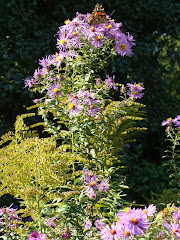 I was contacted by Green Bean and told to quit whining about my garden and get busy and write a book report!
I was contacted by Green Bean and told to quit whining about my garden and get busy and write a book report!Actually, that's not in the least true, and you all know it. From all I can tell Green Bean is about as nice as pie. But if she had said that, she would have been right on, because I've been procrastinating, and it's high time I told you about a this book, because I really enjoyed reading it.
"The Worst Hard Time" by Timothy Egan falls into my favorite genre of non-fiction, which is social history. I love to read about the ordinary people who lived through a certain time period, and how they responded to the events. For many years I was friends with a lady (who actually was my high school English teacher and a member of my church) who grew up living in a dugout in Southeastern Colorado, as the daughter of a dry-land wheat farmer. She was such an impressive person; so forthright, sensible, and good-humored. She talked about taking a stick to the garden to beat off rattlesnakes, going out with her siblings to hunt for dried cow-chips to burn in their cook-stove, eating cooked cracked wheat for every meal one year when they had to live on their seed wheat, and, sadly, that they all suffered from chronic lung ailments from a childhood spent choking on dust. Any book that told me more about the life she led was interesting to me.
Timothy Egan went to the area that was once know as the Dust Bowl, and interviewed elderly residents who lived through the six continuous years of devastating drought that exacerbated the damage that farmers had unwittingly done to what had been excellent grazing land. These folks were not the Okies that we think of from "The Grapes of Wrath". The Okies were mostly from Eastern Oklahoma, Arkansas, and East Texas, and were poor share-croppers that were displaced by disruptions in the economy. Rather, these were people who had claimed land of their own through the Homestead Act, and were convinced that it could be farmed at a profit. They, for the most part, did not leave, because they were land owners, and they naturally always thought the next year would bring rain and they would make a crop. Some had farmed there very successfully in the 1920's, not realizing that they were experiencing an unusually wet decade. Then, with the 1930's the drought came.
Egan writes about the hardships faced by these people, the mistakes they made in their farming practices, and how a single man, Hugh Bennett, convinced the the government to help these folks learn a new way of farming that could restore the land. One thing he brings out is that the homesteaders were pressured by the government in the 20's to raise wheat, against the better judgement of some who knew the area was drought-prone, and that they were also somewhat doomed to poverty by the rule that stated they could only claim 160 acres, an inadequate amount of land to support a family on the high plains. It was difficult for President Roosevelt to admit that those mistakes had been made, but Hugh Bennett, a soil scientist, finally convinced him, and that allowed for a new approach, offering incentives to farmers to take land out of production and replant it in grass, teaching contour plowing, planting windbreaks, and all sorts of other practices that are routine today.
Reading the first person accounts, I was struck by what a long period of time these massive dust storms went on. For six years, people lived essentially in a blizzard of dust, unable to farm, unable to keep their cars running, unable even to keep schools open, never mind earn a living or even raise a vegetable garden. Their livestock died, their children and older people died of dust pneumonia, their roads and farm equipment were buried by drifts of dirt.
At one point, reading the book in bed, I put it down thinking I couldn't read about yet another dust storm. I turned out the light, and, as I lay in bed, I realized that that was the point of the book. The storms just went on and on and on. It was the only way to help the reader understand what the farmers on the Great Plains went through.
I wish that more time had been spent actually talking about the new soil conservation practices that were implemented. I kept reading, thinking that we would get to the turning point, so to speak, and enjoy the benefits of the new methods. Instead, the book essentially ends with the decision by Roosevelt to agree to Hugh Bennett's initiatives. A short chapter at the end showing us what the area is like today would have been nice.
I also think an exploration of the way Roosevelt's farm subsidy system needed a sunset clause, without which we have been stuck with ongoing economic intervention by the government, would have been helpful. We've yet to extricate ourselves from the New Deal, which, though very much needed in the Depression, is now an albatross around our necks. It was good history for me, though, and allowed me to understand better how we got where we are today.
I would give this book a 4 out of 5 stars if you like social history, and 3 out of 5 if you are looking for a green read. Personally, I like the combination. I thought this was a worthwhile read.

To read more reviews, go to The Blogging Bookworm.















5 comments:
Sorry about the pressure. (Well, not really). I rely on your reviews, Joyce, so you'd better keep on top of things. ;-) This sounds like the kind of book I'm looking for these days - green plus. Thanks for the review. I added it over at the worm.
Sounds fascinating!
An excellent review, Joyce. I don't read a lot of non-fiction, so I probably wouldn't read the whole book, but it does sound interesting. When I read true accounts like these, I am always reminded of how "good" we have it today. I agree with you that government farm subsidies have outgrown their original purpose.
GB-Just joking about the pressure. I need someone to give me a boot or I wouldn't get anything done.
Donna, it is good! Lots of interesting personal stories.
Rose-It's good to hear from a farmer. I think you and your husband would have some insights into this book that I sure don't have. I know Illinois wasn't the Dust Bowl, but we've adopted some of the soil conservation techniques. My grandparets remember when the dust would make it all the way here from the West. What a mess that must have been.
I can totoally see Greenbean excising her super power to pressure you into more reading :) Kidding.
Sounds like a good book. I love books with multiple angles - historic and green. Thanks for the reviews.
Post a Comment